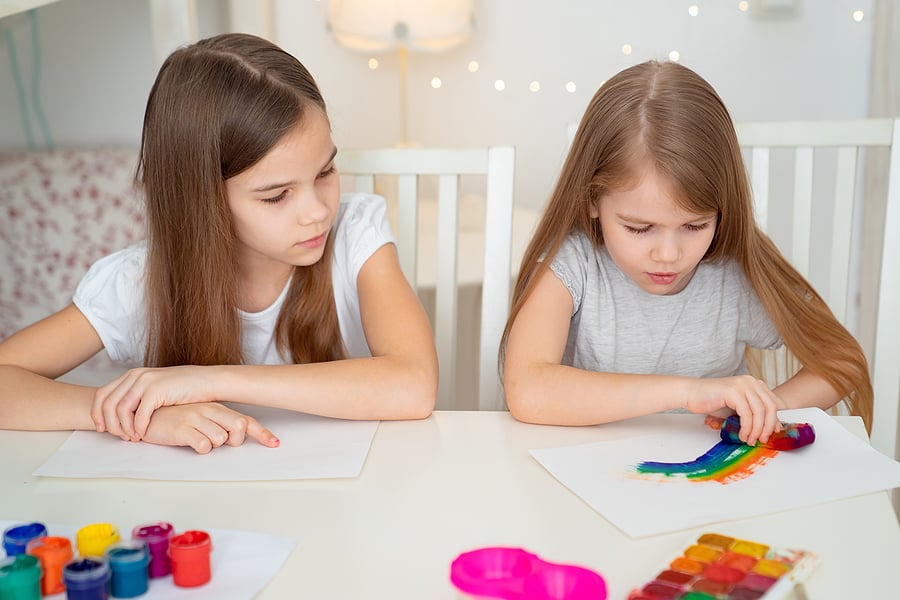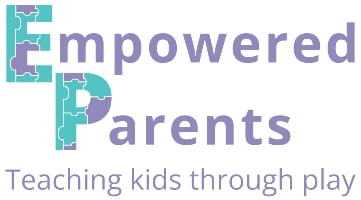Featured by Twinkl in World Art Day Blog
While there’s a place for adult-guided creative activities – such as making cards for Mother’s Day that are a little more interesting than blobs of paint – true creativity usually happens during art that is open-ended and not directed by adults.
Here are some simple ideas for process art for preschoolers and toddlers.
What is Process Art for Preschoolers?
Process art is art that focuses on the experience and process involved in creating. It is free, open-ended art, meaning children are able to freely choose what materials to use, how to use them and what to create.
For preschoolers and toddlers, you may want to provide a few choices and some limitations for creative process art, or you may be dealing with way more mess than you can handle.
Product vs Process Art
As the name suggests, the difference between product and process art is that the former focuses on the end result and what the piece of art looks like, while the latter is all about the time spent creating it.
Why is Process Art Important for Preschoolers?
While older children may start out with a clear intention when doing an art project, most preschoolers are still learning how to hold the art materials and what to do with them.
The act of manipulating materials and learning to use them is an educational activity in itself and a very necessary part of a child’s development.
When the focus is on the product too soon, children don’t get adequate time to learn how to creatively work with materials, by exploring without restrictions.
Also, true creativity is not about copying a model but about creating something unique, something that expresses the artist’s feelings, mood and how he perceives the world.

Not only is process art necessary for learning how to develop more creativity, but it is also important for building many other skills.
Here are just some of the benefits of process art for preschoolers:
- Building fine motor control while cutting, pasting, holding crayons and brushes, etc.
- Developing pre-writing skills by learning to control art tools and make strokes, patterns, lines, etc.
- Developing cognitive skills such as thinking skills and problem-solving.
- Finding a healthy way to express one’s emotions.
- Social development when creating freely together, without being interrupted by adults guiding the activity.
- Increasing attention span over time by getting involved in fun creations.
- Improving hand-eye coordination and crossing the midline during large-scale painting or drawing activities.
Open-Ended Process Art Activities for Preschoolers
Here are some low-prep, simple process art ideas for kids.
Painting at an Easel
Provide large paper and brushes in various sizes. While the activity should be free, implement rules such as no dripping paint on the floor, no painting on the board (only the paper), etc.
As for the paint, you could offer:
- All the basic colours
- The primary colours (and see if the secondary colours are discovered during the process)
- Various shades of one colour
For this and all other messy paint or glue activities, use a painting apron to alleviate the stress of ruining clothes.

Sand Art
All you need is paper or cardboard, some liquid craft glue or wood glue, and a container of sand to create freely with. Sand play has many benefits.
If possible provide different types of sand – such as from the garden and sandpit – to work with various textures.
Drawing
Drawing is an important activity to do regularly and is also an example of process art. Limit the colouring books and provide lots of paper and tools – wax crayons, markers, chalk, oil pastels, pencils, etc.
Children need lots of practice in order to progress through the stages of drawing. There is even a predictable process in learning to draw a person.

Collage
Provide a wide assortment of collage papers and materials and a glue stick or some liquid glue.
Materials can range from papers of all types (tissue paper, newspaper, cardboard, etc.), to different materials such as tin foil or fabric, to small objects (beads, food items, shells, etc).
A nature collage can also be a fun idea. Kids can collect leaves, flowers, sand and other items outside and collage them freely.
This is one activity where you can provide complete freedom by having small tubs of different materials available, but not prescribing what to use.
Crafts
While this may be similar to the previous activity, it is different in that your child doesn’t necessarily need to paste items onto paper to make a collage.
They make whatever their imagination comes up with. They might end up drawing a simple picture, making a card or creating an elaborate collage.
Simply offer containers with various supplies – such as paper, cardboard, drawing utensils, scissors, glue, stamps, ink, etc.
This should be completely free and child-led.

Finger Painting
This is one of the best types of messy play but it can also end up being avoided. Try to embrace the mess and do it anyway.
Use aprons, do it outside if you need to and let your kids have some uninterrupted fun.
Vary this activity by offering different textures of paint and colours.
Here are more finger-painting ideas to try, including some recipes.
Box Construction
Box construction, a form of construction play, is a good activity for developing problem-solving abilities.
It requires a great amount of skill to represent objects with boxes and waste materials and to find ways to reliably attach them to each other.
You will often see children failing to attach something and then trying repeatedly until they succeed.
Potato or Sponge Printing
Printing activities are fun and also easy to do with a variety of objects. Use potatoes or lemons cut in half, sponges, corks, blocks, or just about anything you can make prints with.
Dip them into a tray of paint and let the magic happen. They make beautiful designs and patterns.

Toothbrush Painting
All you need are some old toothbrushes and a tray of paint. Dip the toothbrushes into the paint and then smear them around their page.
Provide different colours of paint so they can be mixed into new colours as they are spread around the page.
Ball Painting
Gather all the balls you can find – golf balls, marbles, rubber balls – and have some fun making a ball painting.
All you need is a box, paper, some paint and some balls to roll around in the paint.
Straw Painting
There are a few ways to do straw painting and you can let the kids decide. Provide paper, cups with paint in them and a few straws.
They may splatter the paint on the paper, use the straw as a brush or blow into the straw to make the splatter shapes.
Let them experiment and find out the many uses of the straws on their own.
These are just a few process art activities for kids. There really is no limit to what they can create when they are given a bit of freedom.

